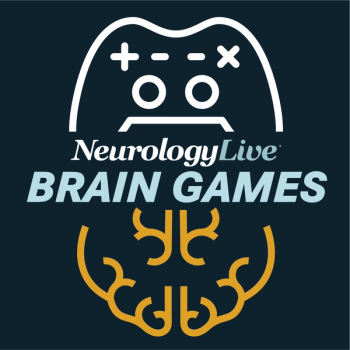
Narcolepsy Treatment Trends and Change in Alerting Agent Use After Low-Sodium Oxybate Initiation
In this final episode, the sleep experts analyze real-world prescribing data to understand how low-sodium oxybate impacts the use of traditional alerting agents in narcolepsy. [WATCH TIME: 4 minutes]
Episodes in this series

WATCH TIME: 4 minutes
In this special report series from NeurologyLive, leading sleep medicine experts Eric Olson, MD, and Anita Shelgikar, MD—president-elect of the American Academy of Sleep Medicine—offer their perspectives on six late-breaking presentations from the
Throughout the series, the discussion covers a range of pressing topics, from cardiovascular safety and high-dose efficacy of low-sodium oxybate to investigational therapies like TAK-861 and ALKS 2680. The panel also unpacks trends in prescribing behavior and the influence of social determinants of health, offering a comprehensive look at the evolving treatment landscape for central disorders of hypersomnolence.
This final episode highlights a retrospective analysis of prescription data exploring treatment patterns in narcolepsy before and after the introduction of low-sodium oxybate. In this segment, Olson and Shelgikar reflect on how the medication has shifted alerting agent use in real-world practice, with roughly 40% of patients reducing or discontinuing other stimulants after starting therapy. The discussion also touches on the value of large-scale claims data and the importance of tailoring treatment strategies to simplify care without compromising outcomes.
Transcript edited for clarity.
Eric Olson, MD: The sixth late-breaking abstract we wanted to cover is titled “Narcolepsy Treatment Trends and Change in Alerting Agent Use After Low-Sodium Oxybate Initiation.” This is an interesting study aimed at understanding how the introduction of low-sodium oxybate influences the overall treatment landscape for narcolepsy—particularly in terms of alerting agent use.
To explore this, the investigators used the Optum Market Clarity dataset, a large administrative claims database with prescription information. They focused on patients with narcolepsy aged 7 years and older and tracked how medication patterns changed after low-sodium oxybate became available.
The overall cohort included over 43,000 individuals diagnosed with narcolepsy. Of those, about 10,000 were assessed after the introduction of low-sodium oxybate. From 2007 to 2023, traditional alerting agents remained the most frequently prescribed medications—used in 53% of patients overall. But when focusing on the subgroup that initiated low-sodium oxybate, 40% had a reduction in their use of traditional alerting agents or discontinued them altogether. Another 5% switched to a different alerting agent, and in about 40%, there was no change in alerting agent use.
So, while low-sodium oxybate isn’t replacing alerting agents entirely, it does appear to reduce the need for them in a substantial subset of patients.
Anita Shelgikar, MD: Thanks for that, Eric. I agree—this is a really interesting look at large-scale claims data, which is especially valuable in rare conditions like narcolepsy. These kinds of datasets let us observe broad trends, even if they don’t always capture the nuances behind medication decisions or concomitant therapies.
Still, it’s helpful to see that initiating low-sodium oxybate may allow for simplification of treatment regimens in some patients, without sacrificing efficacy. That could have real implications for improving quality of life and adherence. The key going forward is identifying which patients are most likely to benefit from that kind of streamlined approach.
Eric Olson, MD: I don’t have any other comments—I'm afraid that covers it for me.
REFERENCE
1. Markt SC, Whalen M, Alexander JK, et al. Narcolepsy Treatment Trends and Change in Alerting Agent Use After Low-Sodium Oxybate Initiation. Presented at: 2025 SLEEP Annual Meeting; June 8-11; Seattle, WA. ABSTRACT LBA 1674.
Newsletter
Keep your finger on the pulse of neurology—subscribe to NeurologyLive for expert interviews, new data, and breakthrough treatment updates.
































